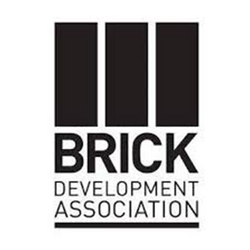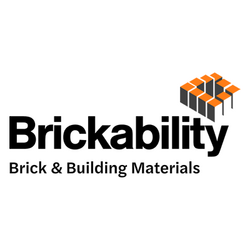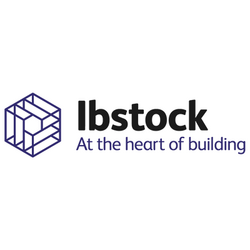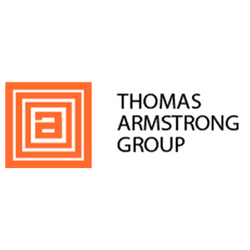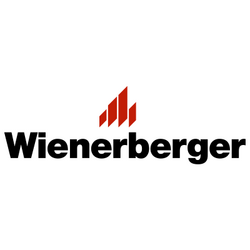Birmingham City University’s Centre for Future Homes helps organisations explore robust, scalable, and sustainable solutions to meet the challenges of the Housing Industry using academic research based on data and customer insights.
By utilising evaluating models and design tools, the Centre provides sustainable and cost-effective solutions.
www.centreforfuturehomes.org
www.centreforfuturehomes.org

Get Britain Building
The UK Government is committed to growing the economy. There is no better way than to invest in the construction sector and its UK based supply chain. For every £1 invested UK PLC gets a £2.84 return and the skilled jobs created will change lives and have a massive social impact.
The construction sector is a major contributor to the UK, but in recent years the economy has endured a succession of challenges including the Covid 19 pandemic; the impact of the Russian invasion of Ukraine; and the cost-of-living crisis. Now is the time for yet another construction led economic recovery. We need to invest and enable the construction sector to build the infrastructure and homes that are so desperately needed as well as retrofitting our existing homes and other buildings to ensure the UK can meet its zero-carbon target by 2050.
The construction sector is a major contributor to the UK, but in recent years the economy has endured a succession of challenges including the Covid 19 pandemic; the impact of the Russian invasion of Ukraine; and the cost-of-living crisis. Now is the time for yet another construction led economic recovery. We need to invest and enable the construction sector to build the infrastructure and homes that are so desperately needed as well as retrofitting our existing homes and other buildings to ensure the UK can meet its zero-carbon target by 2050.
It is vital that Government support the UK manufacturing of building materials and construction skills development. The multiplier effect of purchasing materials produced in the UK and building homes employing local labour would deliver a £94 billion return to the UK economy at normal rates of build. However, delivery of new homes is currently constrained by the limited supply of land, finance for local builders, planning delays and affordability. The recent changes to the shortage occupation list are welcome but for long-term security of supply we must train and develop our indigenous workforce.
We need to act now and GET BRITAIN BUILDING
www.getbritainbuilding.co.uk

Masonry Onsite
Masonry Onsite, brick and block construction is the method of construction that 93% of homeowners prefer.
Bricks and blocks are made in the UK creating many thousands of jobs in manufacturing, distribution and onsite construction.
Masonry construction offers many benefits including:
Bricks and blocks are made in the UK creating many thousands of jobs in manufacturing, distribution and onsite construction.
Masonry construction offers many benefits including:
- Flexibility
- Better value than alternatives
- Non combustible
- Resilient to climate change
- Provides Thermal mass
- Warm in winter
- Cool in summer
- Adaptable
- Readily available
- Low maintenance
- Attractive facades
- Tried and tested
Masonry construction has a design life of at least 150 years and is the dominant material used to construct new homes in the UK, creating a built environment for future generations.
To find out more visit Masonry Onsite: www.masonryonsite.com
To find out more visit Masonry Onsite: www.masonryonsite.com

Recognised Construction Details
Thermal Bridging Guidance and Ψ-Values
Thermal bridging is something that we, as an industry, have been hearing more and more about in recent years. With a drive towards more energy efficient homes, thermal bridging is becoming increasingly more important within the industry, as research shows it can account for up to 30% of all heat loss from buildings.
The ever-increasing demand for energy efficient buildings, largely driven by changing legislation, has shifted the focus back onto architectural detailing and on-site construction practices. The first step should be minimising the heat loss through the fabric of the building in a bid to reduce thermal bridging. But what actually is thermal bridging?
Thermal bridging is something that we, as an industry, have been hearing more and more about in recent years. With a drive towards more energy efficient homes, thermal bridging is becoming increasingly more important within the industry, as research shows it can account for up to 30% of all heat loss from buildings.
The ever-increasing demand for energy efficient buildings, largely driven by changing legislation, has shifted the focus back onto architectural detailing and on-site construction practices. The first step should be minimising the heat loss through the fabric of the building in a bid to reduce thermal bridging. But what actually is thermal bridging?
What is Thermal Bridging?
In terms of a building, a thermal bridge is part of the building envelope through which heat is transferred at a substantially higher rate than through the surrounding area. The heat losses at these junctions are considered independently of the U-values of the elements.
For example a thermal bridge is created when a lintel spans between the inner and outer leaf of a cavity wall, allowing heat to flow through the path created by the lintel from inside the building to the outside environment. It has become apparent that significant heat is lost through thermal bridging, therefore building regulations now require the heat loss through U-values and Thermal Bridging (Ψ-values) to be accounted via SAP calculations.
Compliance with SAP calculations is a requirement for all new build to pass building regulations.
To access this free to use resource visit www.recognisedconstructiondetails.co.uk/
In terms of a building, a thermal bridge is part of the building envelope through which heat is transferred at a substantially higher rate than through the surrounding area. The heat losses at these junctions are considered independently of the U-values of the elements.
For example a thermal bridge is created when a lintel spans between the inner and outer leaf of a cavity wall, allowing heat to flow through the path created by the lintel from inside the building to the outside environment. It has become apparent that significant heat is lost through thermal bridging, therefore building regulations now require the heat loss through U-values and Thermal Bridging (Ψ-values) to be accounted via SAP calculations.
Compliance with SAP calculations is a requirement for all new build to pass building regulations.
To access this free to use resource visit www.recognisedconstructiondetails.co.uk/

International Masonry Society (IMS)
Founded in 1986, The International Masonry Society has a membership from throughout the world and an international reputation in the field of masonry literature, the dissemination of research and current thinking, as well as the organising of meetings, seminars and symposia. The Society presents an unrivalled opportunity for members to remain current in all masonry fields.
The International Masonry Society was originally founded in the United Kingdom, with the British Ceramic Research Association and “Timber” West as focal points, but quickly grew to encompass all masonry materials and interests, firstly within the UK and then internationally. There are currently members in 31 countries, including those from Africa, Asia, Europe, both North and South America, Canada, Australia and New Zealand.
The International Masonry Society was originally founded in the United Kingdom, with the British Ceramic Research Association and “Timber” West as focal points, but quickly grew to encompass all masonry materials and interests, firstly within the UK and then internationally. There are currently members in 31 countries, including those from Africa, Asia, Europe, both North and South America, Canada, Australia and New Zealand.
The objectives of the International Masonry Society are to promote discussion and advancement of the science and practice of masonry as allied to its constituent materials, and to all aspects of the design and use of masonry and the construction process. It additionally aims to provide a means of contact for all those involved in masonry science, design and industry, generating published papers having an international circulation. In pursuing its objectives, the Society publishes the journal Masonry International.
The International Masonry Society acts as a focus for all masonry matters, and for learned discussion and the interchange of technology and engineering matters. The Society provides for the dissemination of research information relating to all aspects of masonry in construction. It provides a pivot for all those involved in, or interested in, masonry as a material and constructional form. The Society maintains an active interest and involvement internationally in all masonry matters in these countries.
Visit the IMS website at: www.masonry.org.uk
The International Masonry Society acts as a focus for all masonry matters, and for learned discussion and the interchange of technology and engineering matters. The Society provides for the dissemination of research information relating to all aspects of masonry in construction. It provides a pivot for all those involved in, or interested in, masonry as a material and constructional form. The Society maintains an active interest and involvement internationally in all masonry matters in these countries.
Visit the IMS website at: www.masonry.org.uk






